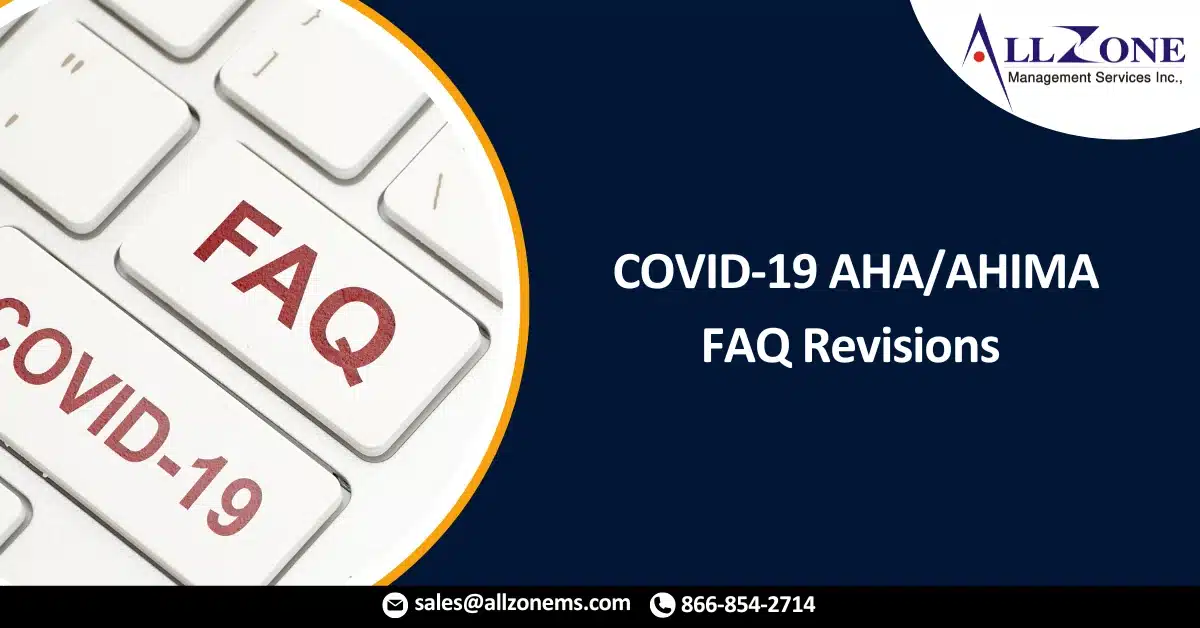The implication of an incorrect COVID-19 diagnosis can be profound.
I made a mistake last week. I was told that the joint American Hospital Association/American Health Information Management Association (AHA/AHIMA) frequently asked questions (FAQ) regarding ICD-10-CM coding for COVID-19 had been updated, so I checked the website (https://www.codingclinicadvisor.com/faqs-icd-10-cm-coding-covid-19). On the introduction page, it stated, “revised August 27, 2021.” The list of questions has become quite lengthy, so I generally search the document quickly for the newly updated ones by searching for the date of revision – in this case, Aug. 27.
There was a single revision for that date. It was Question No. 59. It asked whether it is appropriate to code Z28.3, Underimmunization status, for patients when the provider documents that the patient is unvaccinated against COVID-19. The answer was no. That code was designed for the pediatric patient who is unvaccinated or behind in the recommended pediatric vaccine schedule. Since COVID-19 vaccination is not mandatory, we are not permitted to declare unvaccinated patients “underimmunized.”
However, I received an email notifying me of a COVID-19-related question in the AHIMA Forum, so I went back and looked more closely. Imagine my surprise when I discovered that the majority of the edits had actually been made on Aug. 25, and I had missed seeing them because they weren’t included in my search parameters.
The email referred to Question No. 24. It pertains to the concept of coding signs and symptoms in a COVID-19 infection. The previous guidance was that respiratory signs and symptoms were not to be captured, because COVID-19 is a “primarily respiratory condition.” My impression is that they are now specifying that cough or shortness of breath would be considered integral to pneumonia, but not necessarily COVID-19, per se. The updated advice now states that signs and symptoms not explained by the manifestations could provide useful additional information, but it eliminated the respiratory condition disclaimer.
Many of the other edits are just preparing for the new U09.9 code, Post-COVID-19 condition. The updates basically swap it out for B94.8, the sequelae of infectious and parasitic diseases code we are currently using generically. However, Question 43 No. is a little different. The prior advice was that the phrase “post-COVID-19 syndrome” indicated temporality, and that Z86.16, Personal history of COVID-19, was the appropriate code. I did not agree with that advice. My opinion was that the clinician was trying to signal that that constellation of symptoms was the residua of a COVID-19 infection. The updated advice recommends use of symptom codes for the specific complaints – in this case, generalized weakness and lack of appetite (i.e., anorexia), and now, our handy-dandy post-COVID-19 condition code, U09.9. I think they got it right now, at least as of Oct. 1.
The next topic is important. There are several questions that relate to it. Question No. 55 asks about a patient who comes in for conditions not generally associated with COVID-19, but a positive COVID-19 test documented as “likely reflective of old infectious virus.” Question No. 56 notes a condition that could be related to COVID-19 – that is, acute respiratory failure. The provider did not optimally document by affirmatively linking the respiratory failure to the additionally documented COPD exacerbation, but the positive COVID-19 test is 80 days following a previously diagnosed COVID-19 infection. The provider documented “history of COVID infection; currently still testing positive for COVID.”
Coding Clinic’s advice was consistent with my opinion. They essentially say that if the provider is asserting that the COVID-19 is historical, despite a positive COVID-19 test, the Z86.16, Personal history code, should be utilized. I will go a step further and explicitly point out that the provider must not imply that there are long-lasting effects from that prior infection; that is, the signs/symptoms or conditions being addressed are not believed to be sequelae of that prior infection. If they were to do so, then the proper code to use would be U09.9.
Question No. 57 notes a positive COVID-19 test during an admission for something non-COVID-19-related, resulting in the fully vaccinated patient being placed in isolation. The provider stated “COVID-19 virus detected,” but since they took the precautions, Coding Clinic’s advice was to assign U07.1, COVID-19, as a diagnosis. They didn’t mention the sequencing, but U07.1 would be a secondary diagnosis if it were not the reason, after study, that occasioned the admission. So, we can appreciate that coders are permitted to take a positive test to U07.1, but we are seeing that there are nuanced situations in which this should not always be taken as a given.
Question No. 58 brings this to bear. In this scenario, an asymptomatic patient was readmitted from a nursing home because their COVID-19 test was positive after a recent hospitalization, which I am inferring was non-COVID-19-related. Repeat tests were negative, and infectious disease and hematology decided that the initial test was a false positive. Again, total agreement with the advice to use Z20.822, Contact with and suspected exposure to COVID-19. During this time of pandemic, we cannot use an exposure-ruled-out code (Z03.818, Encounter for observation for suspected exposure to other biological agents ruled out). U07.1, COVID-19, isn’t appropriate if the clinician believes it is a false positive and not indicating infection. Z20.822 is the only logical choice left.
In conclusion, the coder is permitted to pick up U07.1 if there is a positive test, but they do not have to if that does not tell the story accurately. If the healthcare provider’s documentation signals that they do not believe there is a true COVID-19 infection, the coder should not knee-jerk capture U07.1. However, if the patient’s COVID-19 status is unclear from the documentation, it is always appropriate to query for clarification. The implication of an incorrect COVID-19 diagnosis can be profound.
For More Information: covid 19 aha ahima faq revisions made

